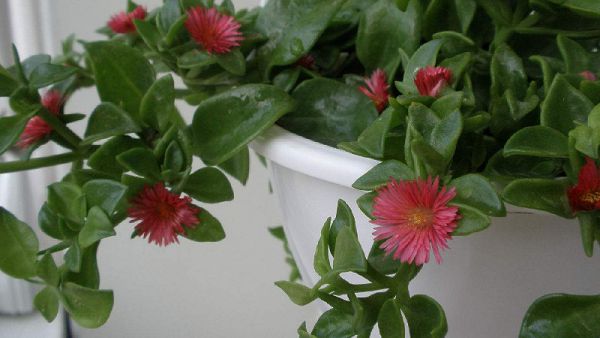Taboo on fertilization time of potted flowers in family

Many people like to grow flowers at home, which not only beautifies the room, evolves the air, adjusts temperature and reduces heat, but also edifies sentiment and pleases the body and mind. However, in addition to watering potted flowers, fertilization is also an important link in the process of raising flowers. When flowers are in the growing period, fertilization can promote the vigorous growth of flowers, so it is necessary to apply more fertilizer, while when flowers are dormant, potted flowers grow slowly. It is necessary to apply less fertilizer. Therefore, potted flower fertilization is very important, but also to be very careful, in addition to controlling the amount of fertilization, but also taboo fertilization time, the following I would like to tell you about the three periods of time when potted flowers are not suitable for fertilization.
1. Fertilization during the period of avoiding flowering
Family potted flowers, such as camellia, roses, roses, carnations and orchids, should stop fertilizing before the buds are opened and colored, and phosphorus and potash fertilizers should not be applied continuously. Because fertilization at flowering stage, especially nitrogen fertilizer, will stimulate vegetative growth, increase respiratory metabolism of new leaves, reduce nutrients obtained by flower organs, inhibit growth and development, postpone flowering, cause scorched flowers, promote early withering of flowers, and shorten florescence.
2. Avoid overcast and rainy days and fertilization at night
In rainy days and nights in early spring or late autumn, the air temperature is low, leaf transpiration and root absorption are reduced, fertilizer use efficiency is low, accumulated in the soil, coupled with the effect of waterlogging and air closure, it is easy to hurt the root. Therefore, it is necessary to delay fertilization on sunny days when it is overcast and rainy and when it rains heavily.
3. Do not apply fertilizer in the hot sun
The hot sun at noon in summer and autumn, the air is dry and the transpiration is strong. After fertilization, it is easy to cause physiological and metabolic disorders in the plant, resulting in yellowing and wilting of branches and leaves and decay of flowers. Therefore, flowers should be combined with watering and fertilization after high temperature in the morning or afternoon. It is not suitable to apply fertilizer at noon in the hot sun.
Different kinds of flowers have different requirements for fertilizer. For example, sweet-scented osmanthus and camellia like pig manure and avoid human feces and urine; southern flowers such as rhododendron, camellia and gardenia avoid alkaline fertilizers and like slightly acidic fertilizers; flowers dominated by foliage (such as rich trees and green apples) can pay more attention to nitrogen fertilizer; flowers dominated by ornamental flowers (such as chrysanthemums and dahlias) need to apply an appropriate amount of complete fertilizer during flowering in order to make the flowers beautiful. Flowers with ornamental fruit (such as kumquat and colorful pepper) should properly control fertilizer and water during flowering and apply sufficient complete fertilizer in the period of strong fruit in order to achieve the desired effect; bulb flowers (such as daffodils and tulips) should apply more potash fertilizer to enrich their bulbs. But do you apply fertilizer correctly? incorrect fertilization will also lead to poor growth of family flowers, which can lead to serious death.
1. The newly planted plants are not applied. There are many wounds in the newly planted plants, and if they are stimulated by the outside world, they will not be able to heal and cause rotten roots.
2. No application at flowering stage. Fertilization during flowering will cause bud drop, flower drop and fruit drop.
3. No application during dormant period. Flowers stop or slow down their growth during the dormancy period, slow metabolism and poor photosynthesis. If fertilizer is applied, dormancy will soon be broken, causing plants to continue to grow, which will consume more nutrients and affect flowering in the coming year.
4. Don't apply thick fertilizer. Potted flower fertilization, the concentration should not be too large or too much, otherwise it will cause death. Generally speaking, we should grasp the principle of applying thin fertilizer frequently, and it is appropriate to use three parts of fertilizer and seven parts of water.
5. Do not apply raw fertilizer. If unripe fertilizer is used, it is not only easy to produce worms and maggots, but also often gives off a stench and pollutes the environment, and will ferment in the presence of water, harming the roots of the plant.
6. No single fertilization. Flowers and other plants in the home, in addition to the traditional nitrogen, phosphorus and potassium compound fertilizer, can be properly sprayed with medium and trace element foliar fertilizer; new flowers can be mixed with bio-organic fertilizer in the basin to conserve water and fertilizer to prevent soil consolidation.
7. The diseased and weak plants were not applied. The branch of the diseased and weak plant is thin, the photosynthesis is poor, the metabolism is slow, the deficiency is not replenished, if fertilized, it is easy to cause fertilizer damage.
Related
- Fuxing push coffee new agricultural production and marketing class: lack of small-scale processing plants
- Jujube rice field leisure farm deep ploughing Yilan for five years to create a space for organic food and play
- Nongyu Farm-A trial of organic papaya for brave women with advanced technology
- Four points for attention in the prevention and control of diseases and insect pests of edible fungi
- How to add nutrient solution to Edible Fungi
- Is there any good way to control edible fungus mites?
- Open Inoculation Technology of Edible Fungi
- Is there any clever way to use fertilizer for edible fungus in winter?
- What agents are used to kill the pathogens of edible fungi in the mushroom shed?
- Rapid drying of Edible Fungi



